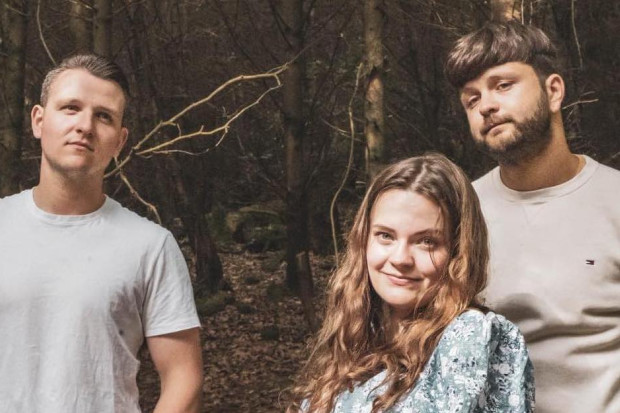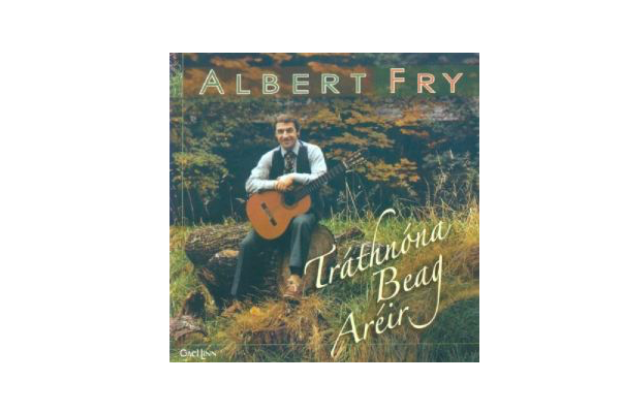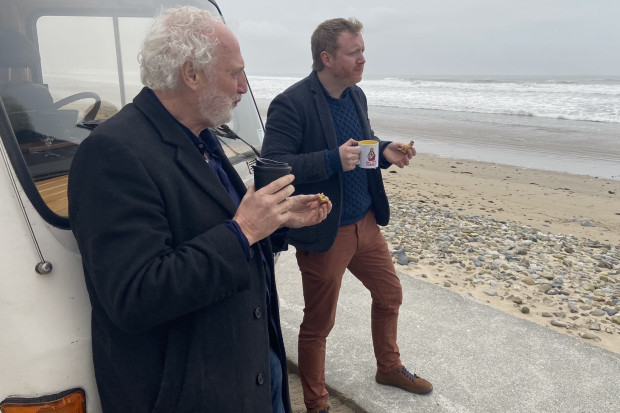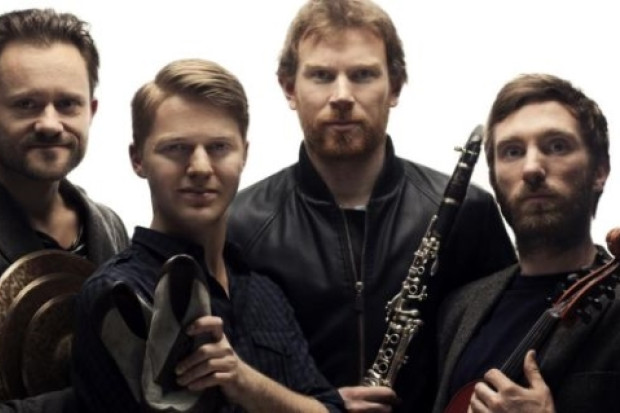
The Raw Bar
It begins with the two notes of an ambulance siren mimicked by a melodeon, high A and low D, high A and low D: a warning blast or a call to attention in the midst of the general hubbub, banter or badinage, mutterings and murmurings, the clink of glasses and the plink-plonk of a fiddle being tuned, the melodeon again, then hushing noises, shhh, shhh, till someone shouts, Ready to go, there’s a semblance of order now, and I hear someone begin to sing, There was a wild colonial boy, and I recognise Sam Murray’s voice giving a Hup! of encouragement. The musicians join in hesitantly at first, seeking the key, gradually getting into full swing behind the song, borne along by a confident guitar backing, and there’s another Hup! from Sam. I envisage a jammed pub, perhaps a Sunday morning session driven by the febrile intensity that comes with the few drinks that restore one to last night’s fun. C’mon Willie! shouts Sam. I know this song well, having learned it in primary school at the age of nine or ten; and, as Sam knows, I’ve been known to sing it myself in similar circumstances, whether early or late, slightly or more than slightly tipsy, and Willie is singing one of its many versions, sounding a bit tipsy himself, with some words and lines new to me. There’s another ‘hup’ or two before the song ends to a great roar of applause, cheers, whoops and hollers. The crowd, it seems, is well delighted and well oiled.
This is the first track of a CD entitled Willie Griffin – Simply the Best, recorded live in November 2009 in Tigh Choilí, Galway, courtesy of ‘The Forge Recording Studio’, and given to me by Sam Murray when my wife Deirdre and I met him in Galway in April 2010. It consists of seven songs by Willie interspersed with tunes from a bunch of great musicians. None of them are identified on the sleeve notes; there is, indeed, precious little information of any kind; but we are given an entertaining insight as to what drives the music. An anonymous text (possibly Sam’s) tells us that ‘Sir Humphrey Davy, in 1815, invented a safety lamp for miners. Before this intrusion, the colliers would bring a canary down the pit with them. As long as their feathery friend kept singing all was well. The above image often visits me on full moon weekends in Galway when Johnny and the boys are fighting against all odds to keep the session going, in the midst of the chaos Willie is called on for a song. Within seconds we have total silence and Willie is rendering the Boston Burgalar [sic]. Between the songs the badinage develops with Willie. Johnny and the rest of us. We’re in a territory between Vaudville [sic] and Riot… sing on Willie….’
Apart from this all we get is a list of the songs and tunes and some words of thanks from John O’Halloran, whom I take to be the Johnny referred to, and whose melodeon playing is a byword for drive, fun and passion, as exemplified by the first set of tunes here, ‘Spike Island Lassies’ and ‘The First House in Connacht’. He’s joined, as far as I can make out, by fiddle, banjo and guitar, the latter probably played by Arty McGlynn, who appears in the background of the cover photograph of Willie holding a mike. And it must be said that by conventional standards – those, say, of a Comhaltas adjudicator – Willie’s singing is eccentric. The pitch wavers, the phrasing is sometimes bizarre, the words sometimes mangled or fluffed. Whether you think it is any good or not depends on your perception of what music is and what it is for. Here, the music is the music of what’s happening. Willie is evidently much loved and his singing generates great crack. The crowd are with him and the intensity of their appreciation is palpable. He delivers the song with gusto and it is well received. Who could fault that?
I first heard Willie’s CD when I put it into the car stereo driving back from Galway the morning after the night before. It led Deirdre and me to reflect that most of our listening to music, these days, is in the car. And we don’t even do that all that often. There was a time, back in the seventies and eighties, when we were mad for music in the small hours of the morning. Coming home from the pub, on those occasions when the session didn’t continue in our house, we’d rummage through the boxes of tapes – tapes of blues, sean-nós, Paris café accordion, Portuguese fado, African pygmy music, Appalachian old-timey, Indian raga, Hebridean psalms, Greek rebetika, flamenco, South American pygmy music, Colombian accordion, Paddy in the Smoke music, Greek Orthodox choirs and Russian Orthodox choirs and Bulgarian folk choirs, Cajun, Romanian gypsy fiddle, Japanese shakuhachi and shamisen, calypso, whatever – tapes of tapes, tapes of jumpy, crackly 78s full of atmosphere and hiss and vibe, recorded in small back rooms wherever in the world, and we’d try to visualise the musicians of elsewhere and the crack that passed between them. The world, before the expression ‘world music’ came into vogue, was our oyster, and rapt in its sounds we were transported to lands that were unfamiliar but whose musical spirit was not unlike our own; we felt a common bond of that raw bar, the beautiful ache and yearning that comes from great music.
Willie Griffin’s CD might be a modern compact disc, but it sounds like one of those tapes, recordings which bear the stamp of authentic values beyond the hermetical seal of a modern studio. This is music with all its fluffs and crack. Listening to it you’re in the now and you imagine yourself to be there. Many years ago Deirdre and I happened to be in the Eagle Tavern in New York, then a great venue for blues, folk and old-timey music. It is or was a typical small back room venue holding maybe forty or fifty people, bare wooden boards for a floor making for a great acoustic, and we were listening to this great old-timey fiddle and banjo duet; and, carried away by it, I let a Murrayesque Hup! out of me, whereupon I was tapped on the shoulder by a woman sitting behind me, and I turned round and she said, ‘Excuse me, but would you mind refraining? You’re spoiling my recording’, as if the music belonged to her alone, and I realised she wasn’t in the now but in some future tense where she would be enabled to listen to the music properly without uncouth interruption. Probably on headphones, which give the illusion that the music is in your own head and not in the world. Now that I’ve written this, I’m reminded that I’ve used this anecdote before in a previous piece; but I excuse myself the repetition on the basis that traditional music consists of repeats or refrains, the same tune played differently on many different occasions, sometimes for radically different purposes. We might repeat ourselves, but the import of those repetitions, whether of words or notes, is never quite the same under the new circumstances. Checking the previous mention (in an article called ‘The New Rough Deal’) I find I’ve amplified it somewhat here, accurately I hope; but one can never wholly trust one’s memory.
At any rate I’ve just realised the ambiguity of the word ‘refrain’, which in one sense means to curb or restrain, from Latin frenum, a bridle, which gives us the English anatomical term frenum or fraenum – according to the American Heritage Dictionary ‘a membranous fold of skin or mucous membrane that supports or restricts the movement of a part or organ, such as the small band of tissue that connects the underside of the tongue to the floor of the mouth’. Though not mentioned in this dictionary, the penis also has a fraenum. And of course ‘refrain’ also means ‘a phrase, verse or group of verses repeated at intervals throughout a song or poem, especially at the end of each stanza’, from Vulgar Latin refrangere. I am reminded that ‘stanza’ comes from the Italian for ‘room’, from Latin stare, to stand, a room being a space wherein one stands or takes a stance, and I hear Willie Griffin standing mike in hand, singing stanzas in the stanza of a Galway pub. ‘Refrain’ is also ‘a repeated utterance or theme’. In this sense, the ostensibly vulgar Murray ‘hup’, repeated at seemingly random intervals, is a refrain; and as these things go, its utterance is not without art, for it must be made at an appropriate break in whatever is being sung or played. Timing is crucial. This kind of vocal intervention requires listening, and a knowledge of what you are listening to; it implies familiarity with other renditions, a whole history of crack.
The crack is what Deirdre and I miss most in most Irish contemporary traditional music, if crack is conversation, wit, passion, fun, excitement, engagement, the kind of playing where even a melancholy tune or a sean-nós song is infused with a sense of joy at its beauty. The performer is immersed in the music. By contrast, much of the traditional music we hear on the air-waves, before we switch off, is more of a display than an engagement. For all its technical accomplishment and studious studio arrangements, it sounds bland and generic. It’s no crack, though perhaps it is craic, a recently invented pseudo-Irish word which implies a spurious jollity not far removed from Paddywhackery. Before it became fashionable, Irish traditional music would be referred to disparagingly as ‘diddly-dee’. To the uninitiated, it all sounded the same; and I can admit that many years ago, before I took up the whistle and flute, I sometimes found it hard to distinguish one tune from another. Paradoxically, I now find that much contemporary recorded traditional music all sounds the same, and I find it difficult sometimes to distinguish the playing of one band from that of another. It’s all diddly-dee to me.
I wonder what this kind of music is for. I sometimes hear it played on the sound system in traditional music pubs before the session of real music begins: an ambience of craic before the crack begins, a musical wallpaper. And I suspect that some of its audience use it as a background to whatever else they might be doing at the time – gardening, jogging, having dinner, perhaps. On the odd occasion when Deirdre and I would be invited to dinner by non-musicians, our hosts would sometimes feel obliged to make us feel at home by putting on a record of Irish music – Van Morrison with the Chieftains springs to mind – and would be perplexed when we’d hint that we’d rather talk to them than listen to music. We prefer crack to craic. Perhaps we are odd in our disinclination to converse and listen to something else at the same time; but when we listen to music we want to do just that, we want to give it our full attention. And there are exceptions to the generic music I’ve been talking about, CDs recorded by musicians we respect, which we buy to listen to and learn from. We would find this music impossible to listen to as mere background.
I’m thinking again of the hubbub and clatter that precedes the first track of Willie Griffin’s CD, and of the A and D melodeon mimicry of an ambulance siren which also acts as a tuning anchor, since all the other musicians must tune to the inflexible notes of the box. I can hear the buzz of anticipation. I remember being delighted by one track in particular which seemed to me to be emblematic of how traditional music works, improvised yet rooted in a system of past renditions. It’s a set of four, spelled on the sleeve as ‘Geoghan’s, The old copper plate, Sailors bonnet, Ladys pantiletts’. Again, a buzz of conversation. An anticipatory fiddle bow being drawn across the strings, and a ready-to-go series of notes played on a flute. It sounds like Sam Murray’s playing, but I can’t be sure, it’s that long since I heard Sam play, and though we half intended to get round to playing tunes when we met in Galway, we never did, too busy as we were with the crack that accompanied a wonderful dinner in Sheridan’s On the Docks. At any rate, the unidentified flute begins, the fiddle joins in, then the box, then banjo; they’re all together a few notes into the reel. They play it the conventional twice over, and then there’s a momentary pause, an uncertain blip of a lull as they consider whether to play it again or whether the flute-player who started it is going to go into something else, and he does, and again they all are with him within a few notes. And so it goes, tune after lull after tune, till it ends. There’s a buzz of conversation throughout, as there always is in live sessions. No doubt some people are listening, and some half-listening, and some not listening at all. I’ve been guilty of all three myself. But then there’s a difference between live music and recorded music. There’s even a difference between live music and a record of live music. I’m just about to listen to the Willie Griffin CD again. I’m going to give it my full attention. I wouldn’t want this as background to anything else. I want to imagine myself being there and not here. I want to enter the Elsewhere that is music, to imbibe the spirit of the Raw Bar. Long live the canary.
Published on 1 August 2010
Ciaran Carson (1948–2019) was a poet, prose writer, translator and flute-player. He was the author of Last Night’s Fun – A Book about Irish Traditional Music, The Pocket Guide to Traditional Irish Music, The Star Factory, and the poetry collections The Irish for No, Belfast Confetti and First Language: Poems. He was Professor of Poetry at Queen’s University Belfast. Between 2008 and 2010 Ciaran wrote a series of linked columns for the Journal of Music, beginning with 'The Bag of Spuds' and ending with 'The Raw Bar'.















